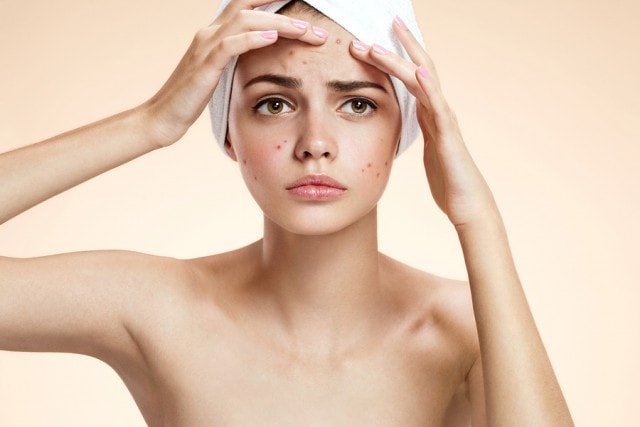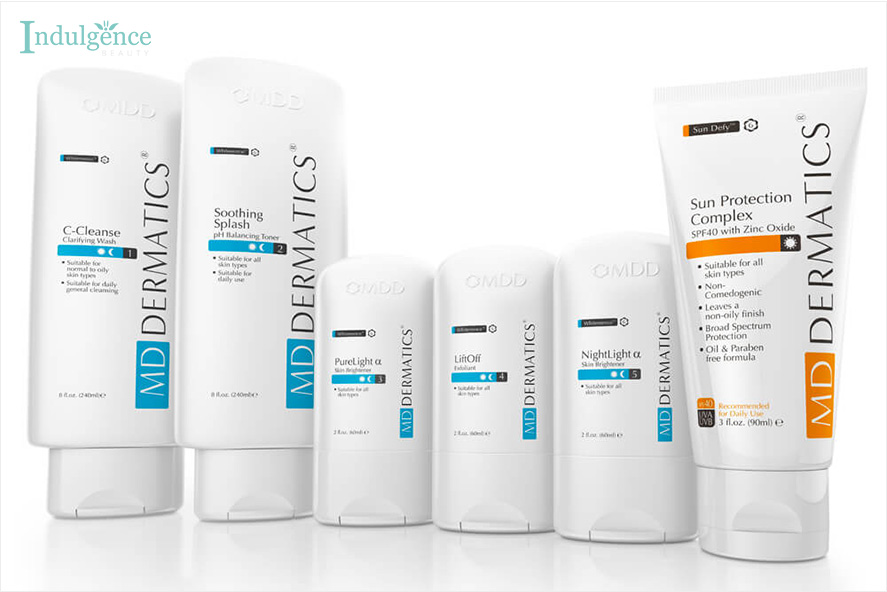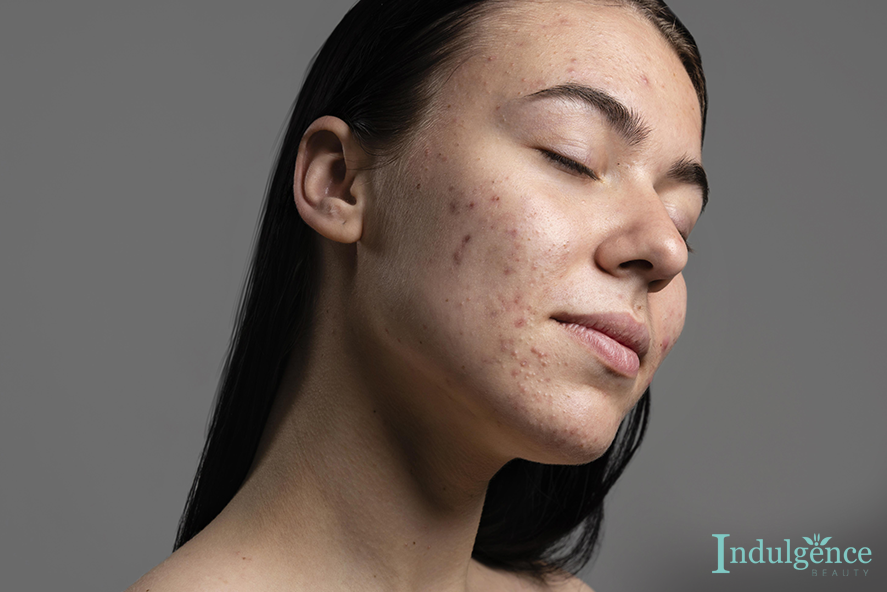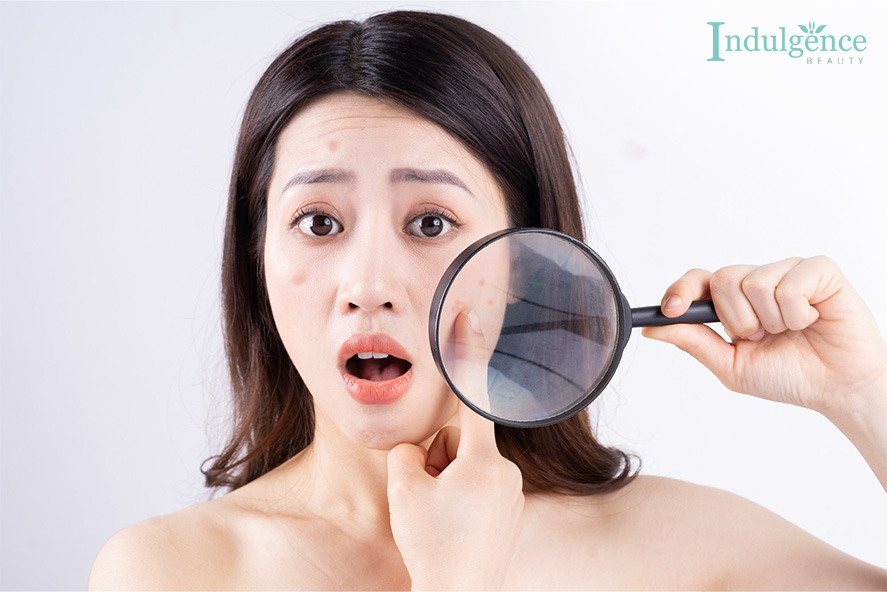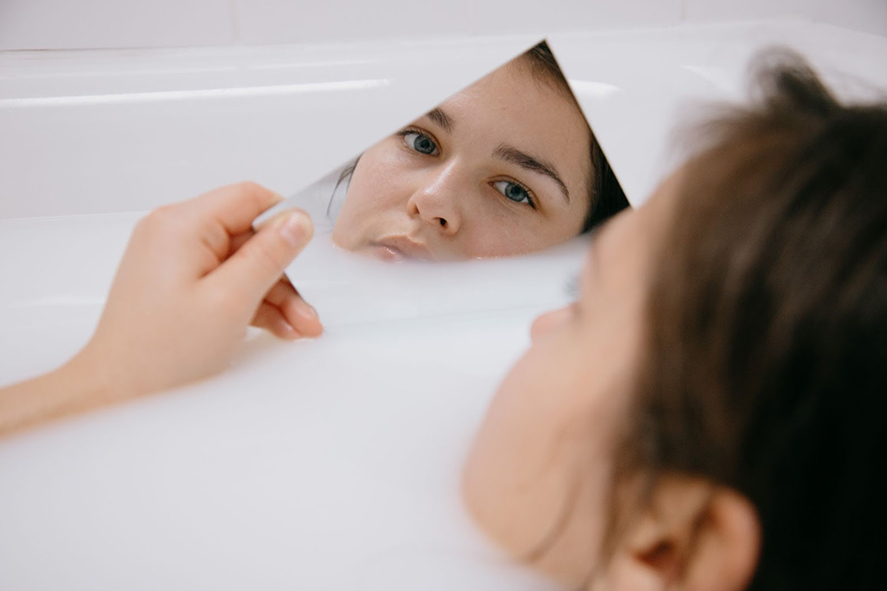Acne treatment for different types of non inflamed acne in Singapore
Non-inflamed Acne, Its Types and Acne Treatment in Singapore
Non-inflamed acne is a chronic skin condition in Singapore that causes pimples and spots on various parts of the body such as the face, neck, shoulders, back, and upper arms. Accumulation of debris in the skin pores results in the formation of blemishes or comedones (a hallmark of non-inflamed acne). Compared to the inflamed type, there is no redness or swelling in non-inflamed acne. However, if bacteria invade, these comedones can turn to “typical” pimples seen in inflamed acne. Non-inflamed acne breakouts can vary from person to person and can be divided into four basic types.
Open Comedones – Also called “blackheads”, these comedones are easy to identify due to their brown to black colour.
Development: A blackhead is mature comedone. It is formed due to the accumulation of sebum produced by oil glands and dead skin cells. When it bursts, its top layer becomes exposed to environmental oxygen that causes its oxidation and turns its colour to brown or black. This phenomenon is similar to discolouration of apple pulp after exposing to air.
Soft Closed Comedones – These are premature comedones and not yet exposed to the air (that’s why they are called “closed comedones”. They present as a small bump on the skin.
Development: Accumulation of oil and plug of cellular debris in the skin pores lead to the development of soft closed comedones. They are called “soft” because oil plug in them remain liquid and covered by a layer of dead skin cells.
Hard Closed Comedones – These comedones are also called “whiteheads” or “milia”. They are not red or painful and visible as small, white bumps on the skin, especially around the eyes.
Development: These are the mature form of soft comedones. The white head is not pus, rather the soft impaction of oil and debris become hard and give the appearance of white collection under the skin.
Microcomedones – These are the earliest form of non-inflamed acne and are too small to be seen with the naked eye. Many acne sufferers have microcomedones along with visible whiteheads and blackheads.
Development: A microcomedone develops when a skin pore or the sebaceous duct opening becomes blocked by dead skin cells or sebum. Every soft or hard comedone begins as a microcomedone.
Treatment
Treatment of non-inflamed acne depends on how persistent and severe your acne is.
Mild Acne
Microcomedones often go unnoticed,there “mild” acne means soft comedones. Mild acne or acne in the beginning phase is usually treated with over-the-counter (OTC) topical applications such as soaps, lotion, pads, gels, and creams. Moisturizing lotions and creams are best for sensitive skin while alcohol-based gels are better for oily skin because they dry the skin.
Following ingredients in OTC remedies play an important role in treating mild acne.
- Benzoyl peroxide: it is an antibacterial and a strong exfoliating agent.
- Resorcinol: helps break down the rough, scaly, or hardened skin
- Salicylic acid: slows the production of sebum and helps reduce inflammation and swelling.
- Azelaic acid: it reduces bacterial growth and strengthens cells that line the follicles.
- Retin-A: it helps open unblocked skin pores through increasing cell turnover
As some of these ingredients can be irritating and causes redness or burning on first use, it is advised to start with the lowest strengths. The side effects are usually mild and subside after continues use, however, you may need to consult an acne specialist and strictly follow the product instructions for a better outcome.
Moderate to Severe Acne
In case of moderate to severe acne with multiple whiteheads or blackheads, it is very important to consult a skin specialist or dermatologist as getting rid of it can be very frustrating and challenging. In order to control this type of acne, you have to follow an aggressive treatment plan that could possibly include strong ingredients like
- Vitamin A: It increases turnover of the skin cells and help stimulate collagen production.
- Glycolic acid: A strong anti-bacterial agent.
- Benzoyl peroxide: Play its role as a potent antibacterial and exfoliating agent.
It is equally important to use products containing these ingredients in the right way as their wrong use can result in damaging side effects.
Another common problem is that severe acne usually come back when an affected person uses acne products for about three to four weeks. This is due to that fact that your skin got used to the products and you started breaking out with blackheads again. To get rid of blackheads permanently, you have to use an adjuvant therapy with consult of your skin specialist.
Non-inflamed acne is notorious as it can develop into a chronic acne. It is actually the toughest kind of acne to get clear. Therefore, for an effective and long lasting effect, it takes patience, true commitment and proper follow up of your Acne Specialist’s guidance.
Prevention and Management Tips
Follow the tips given below to easily get rid of most difficult acne.
- Use warm water and anti-acne soap to wash your face three times a day.
- Refrain from touching the face.
- Avoid scrubbing the skin or popping your acne pimples. Doing this will cause a spread of infection to other non-infected areas of the face.
- To control redness and itching, massage your affected area with ice.
- Wash and clean your hands before applying acne cream, lotions or makeup.
- Avoid unnecessary stay in the sun as sweating can exacerbate the condition. Excessive sun exposure also stimulates sebum production which is in turn bad for your acne prone skin.
- While talking, hold your telephone away from the face.
- Avoid oil-based products and choose makeup for sensitive skin.
- Take necessary measures to reduce stress and anxiety. Both increase production of adrenaline and cortisol, which exacerbate acne.

